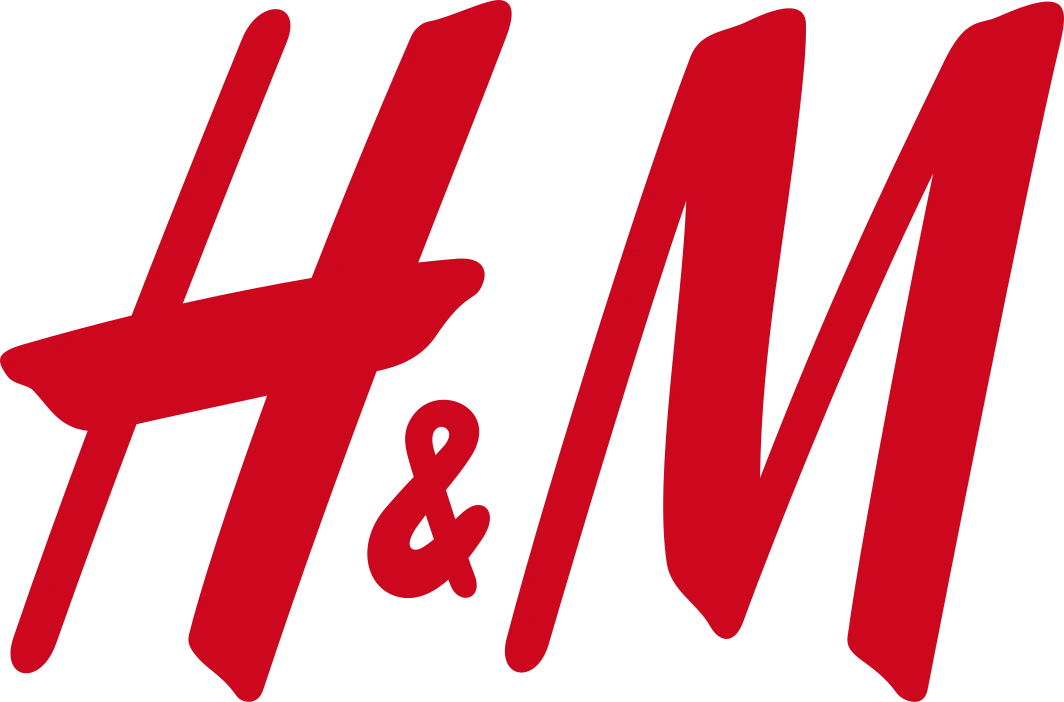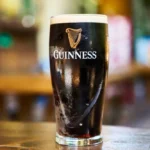
H&M, short for Hennes & Mauritz, is a global fashion powerhouse that has made a significant impact on the retail industry since its founding in 1947. Known for its trendy clothing and affordable prices, H&M has continually evolved to meet the demands of fashion-conscious consumers while navigating the complexities of sustainability and social responsibility. In this blog post, we’ll explore some intriguing facts about H&M that highlight its unique collaborations, innovative sustainability initiatives, and the challenges it has faced in the ever-changing landscape of fashion. Whether you’re a devoted fan of the brand or simply curious about its journey, these facts will provide a deeper understanding of how H&M has positioned itself as a leader in the fast fashion world. Join us as we delve into the fascinating story behind this iconic retailer!
Founding and Early Focus: H&M was established in 1947 by Erling Persson in Västerås, Sweden, originally under the name “Hennes,” which translates to “Hers” in English. The brand initially focused exclusively on women’s clothing, catering to the post-war demand for affordable fashion. The concept was to provide stylish yet accessible apparel for women, which set the foundation for H&M’s future growth and expansion into a global fashion retailer.
International Expansion: H&M took its first significant step toward becoming a global brand in 1964 when it opened its first international store in Norway. This move marked the beginning of H&M’s expansion beyond Sweden, allowing the company to tap into new markets and diversify its customer base. The success of this store paved the way for further international outlets, contributing to H&M’s rise as a prominent player in the global fashion industry.
Business Merger: In 1968, Erling Persson made a strategic business decision to acquire a hunting and fishing apparel store called Mauritz Widforss, which led to the merger of both businesses. This merger resulted in the rebranding of Hennes to “Hennes & Mauritz,” reflecting the broader range of products offered, including menswear. This strategic move not only diversified H&M’s offerings but also positioned the brand to appeal to a wider audience.
Celebrity Endorsements: H&M made headlines in 1973 by signing Anni-Frid Lyngstad, the lead singer of ABBA, as the brand’s first supermodel. This collaboration marked a pivotal moment in H&M’s marketing strategy, as it leveraged the star power of celebrities to enhance brand visibility and appeal. The partnership was a precursor to H&M’s future collaborations with various high-profile celebrities and models, solidifying its place in the fashion industry.
The Big Six Supermodels: In the 1990s, H&M achieved another milestone by hiring the “Big Six,” a group of the most famous supermodels of the era, including Naomi Campbell and Claudia Schiffer. This move not only heightened the brand’s profile but also showcased its commitment to high fashion and contemporary trends. The association with these iconic figures helped H&M attract a fashion-savvy customer base, further solidifying its reputation as a leading clothing retailer.
Met Gala Appearance: During the 2022 Met Gala, actress Laura Harrier made a striking appearance in a custom dress created by H&M. The dress was a stunning dark gray metallic piece featuring a built-in corset, showcasing H&M’s ability to merge high fashion with accessible design. The Met Gala, known for its extravagant fashion statements, provided H&M with a prestigious platform to highlight its creative capabilities and innovative designs.
Flagship Store in New York: H&M’s flagship store located on Herald Square in New York City is the largest H&M store in the world, spanning an impressive 63,000 square feet (5,853 square meters) across four floors. This expansive location features a modern design and is adorned with LCD displays on its exterior, making it a prominent landmark in the bustling shopping district. The store is a testament to H&M’s commitment to providing a comprehensive shopping experience, catering to a diverse customer base.
Wes Anderson Collaboration: In 2016, renowned director Wes Anderson created a short Christmas-themed film titled “Come Together” as a commercial for H&M. The film, which emphasizes the importance of finding joy and connection during challenging times, also served to showcase H&M’s holiday collection. Anderson’s unique storytelling and visual style added a layer of creativity to H&M’s marketing efforts, appealing to both fashion enthusiasts and film lovers alike.
Global Store Count: By 2022, H&M had expanded its presence to a staggering 4,465 stores worldwide, with the United States alone housing 520 of them. This extensive network of stores reflects H&M’s successful global expansion strategy and its ability to adapt to various markets. The brand’s widespread availability has made it a go-to destination for affordable fashion, further solidifying its position as one of the largest clothing retailers in the world.
Sales in the U.S.: The United States has emerged as one of H&M’s largest markets, with net sales totaling 33.4 billion Swedish krona, approximately 3.2 million USD, in 2022. This substantial revenue underscores the brand’s popularity and the effectiveness of its marketing strategies in appealing to American consumers. H&M’s ability to resonate with a diverse audience has been a key factor in its financial success in this competitive market.
Designer Collaborations: H&M made waves in the fashion industry in 2004 by launching its first designer collaboration with Karl Lagerfeld. The collaboration featured a highly anticipated collection that included Lagerfeld’s iconic silhouette shirts, sequin jackets, and lace dresses, which quickly became best-sellers. The collection’s launch was so successful that most of the stock sold out within the first day, showcasing the immense demand for affordable luxury fashion. This groundbreaking partnership set the stage for future collaborations with other renowned designers, further enhancing H&M’s reputation as a fashion-forward retailer.
Market Position: H&M ranks as the world’s second-largest clothing retailer, following Inditex, the parent company of Zara. This position reflects H&M’s extensive product range, innovative marketing strategies, and global reach. The competitive landscape of the fashion retail market has driven H&M to continuously adapt and evolve, ensuring its relevance and appeal to consumers seeking stylish and affordable clothing options.
Diverse Brand Portfolio: In addition to its flagship H&M brand, the company owns several other clothing brands, including COS, Weekday, Monki, & Other Stories, Arket, and Afound. This diverse portfolio allows H&M to cater to different market segments and consumer preferences, from high-end fashion to casual wear. Each brand operates with its unique identity while benefiting from H&M’s established infrastructure and market presence.
Expansion into Home Goods: In 2009, H&M expanded its offerings beyond clothing by entering the furniture market with H&M Home. This new line features a range of home textiles, decor, and accessories, allowing customers to create stylish living spaces. The introduction of H&M Home reflects the brand’s desire to diversify its product offerings and meet the evolving needs of consumers who seek cohesive design in both fashion and home environments.
Public Listing: H&M went public on the Stockholm Stock Exchange in 1974, marking a significant milestone in the company’s history. This decision allowed H&M to raise capital for further expansion while providing investors with the opportunity to participate in the brand’s growth. The public listing also enhanced H&M’s visibility and credibility in the fashion retail market, paving the way for future developments and innovations.
Evolution of Branding: H&M’s branding has undergone several changes since its inception. The brand’s first logo was a simple wordmark of “Hennes,” which was retained when it merged with Mauritz in 1968, becoming “Hennes & Mauritz.” It was during this rebranding that the abbreviation “H&M” first appeared, creating a more recognizable and modern identity for the company. This evolution reflects H&M’s commitment to staying relevant in an ever-changing fashion landscape.
Launch of Activewear Line: On August 4, 2022, H&M introduced its activewear line called H&M Move, rebranding activewear as “movewear.” This line emphasizes versatility, catering not only to traditional sports activities but also to various physical pursuits like yoga and running. The launch of H&M Move signifies the brand’s recognition of the growing demand for functional and stylish activewear, appealing to consumers who prioritize both performance and aesthetics in their fitness apparel.
Leadership Transition: Erling Persson served as the CEO of H&M for over three decades, guiding the company through its formative years and significant growth phases. His tenure ended in 1982 when he passed the leadership to his son, Stefan Persson. This transition marked a new era for H&M, as the company continued to innovate and expand under the guidance of the next generation of leadership, ensuring its ongoing success in the retail market.
Early E-commerce Initiatives: In 1980, H&M partnered with the Swedish mailing company Rowells to launch an early form of eCommerce known as teleshopping. This innovative approach allowed customers to order products directly from home, a concept that was relatively new at the time. The initiative demonstrated H&M’s forward-thinking mindset and willingness to embrace technology to enhance the shopping experience, laying the groundwork for the company’s later success in online retail.
Collaborative Designs with Versace: In 2011, H&M collaborated with Italian luxury fashion house Versace, releasing a highly sought-after collection that included a velvet bomber jacket priced at $129. The collaboration generated significant buzz, especially after Kanye West wore the bomber jacket to the Victoria’s Secret Fashion Show that same year. The collection sold out in just 30 minutes, showcasing the power of celebrity influence and the demand for exclusive designer pieces at accessible price points.
Most Expensive Product: The most expensive product ever sold by H&M was a hand-sewn multi-colored beaded dress, which was a collaboration with the renowned fashion house Balmain. This exclusive piece was priced at an impressive $649, reflecting the luxury collaboration’s unique design and craftsmanship. The partnership with Balmain marked a significant moment in fast fashion, showcasing how H&M could merge high fashion with accessible pricing, appealing to a broader audience while also elevating its brand image.
Garment Collecting Program: H&M has implemented a garment collecting program aimed at promoting sustainability within the fashion industry. Customers are encouraged to bring in their old clothes, regardless of whether they were purchased from H&M, in exchange for a discount on future purchases. This initiative not only helps reduce textile waste but also fosters a culture of recycling and reusing clothing, allowing H&M to repurpose these garments and reduce the environmental impact of fast fashion.
Corporate Social Responsibility Report: In 2002, H&M published its first Corporate Social Responsibility (CSR) report, marking the beginning of its commitment to sustainability and ethical practices. This report laid the groundwork for H&M’s ongoing efforts to improve its social and environmental impact, detailing its strategies for responsible sourcing, labor rights, and community engagement. Over the years, these reports have evolved to reflect H&M’s progress and challenges in its journey towards becoming a more sustainable retailer.
Conscious Collection: Launched in 2010, H&M’s Conscious Collection is a line of clothing designed to promote sustainable fashion by utilizing eco-friendly materials such as recycled polyester and organic cotton. This initiative represents H&M’s commitment to reducing its environmental footprint while offering stylish options to consumers. The collection has gained popularity for its blend of fashionable designs and sustainable practices, encouraging customers to make more conscious purchasing decisions.
Global Change Award: In 2017, one of the notable recipients of H&M’s Global Change Award was Jalila Essaidi, recognized for her innovative creation of a fabric made from cow dung, named Mestic. This award is part of H&M’s initiative to support new ideas and innovations that can contribute to a more sustainable fashion industry. By funding and promoting such groundbreaking projects, H&M aims to drive positive change and inspire other brands to consider alternative materials and sustainable practices.
Power Plant in Sweden: In 2017, a power plant in Sweden utilized 16.8 tons (15.2 tonnes) of unwanted H&M clothes as an alternative fuel source to coal. This initiative highlights H&M’s approach to waste management and energy production, demonstrating a method of repurposing unsold or discarded clothing in a way that contributes to energy generation. By burning these textiles, the plant not only reduces waste but also showcases a potential solution for the environmental challenges associated with textile disposal.
Sustainability Commitment: H&M’s “Sustainability Commitment” is a policy designed to ensure transparency and ethical practices within its supply chain. This commitment emphasizes fair wages, safe working conditions, and environmental due diligence when engaging with potential manufacturers. By adhering to this policy, H&M aims to enhance its accountability and foster trust among consumers, ensuring that its production processes align with its sustainability goals.
Backlash Over Hoodie: In 2018, H&M faced significant backlash when a green hoodie featuring the phrase “coolest monkey in the jungle” was worn by a black child in an advertisement. The campaign was widely criticized for its perceived racial insensitivity, leading to public outrage and calls for boycotts. This incident highlighted the importance of cultural sensitivity in marketing and the potential consequences of missteps in representation, prompting H&M to reevaluate its advertising strategies and commitment to diversity.
Store Closure in Beijing: H&M opened its first store in Beijing, China, in 2007, marking a significant expansion into the Asian market. However, this three-story flagship store closed in 2022 due to declining sales, which were attributed to boycotts from Chinese consumers over the brand’s decision not to use cotton sourced from Xinjiang. This closure reflects the complex dynamics of international retail, consumer sentiment, and the impact of geopolitical issues on global brands.
Frequently Asked Questions about H&M:
1. What does H&M stand for?
H&M stands for Hennes & Mauritz. The company was founded in 1947 by Erling Persson in Sweden. Initially, it was named “Hennes,” which means “hers” in Swedish, and focused solely on women’s clothing. In 1968, the company acquired Mauritz Widforss, a hunting and fishing equipment store, which allowed it to expand into men’s clothing, leading to the addition of “Mauritz” to its name.
2. Where is H&M headquartered?
H&M is headquartered in Stockholm, Sweden. The company operates in numerous countries worldwide, with a significant presence in Europe, North America, and Asia. Its central location in Sweden allows it to maintain strong ties to its European roots while managing global operations efficiently.
3. What is H&M’s approach to sustainability?
H&M has made significant strides towards sustainability through various initiatives. The company has launched its Conscious Collection, which features clothing made from sustainable materials like organic cotton and recycled polyester. H&M also runs a garment collecting program, encouraging customers to recycle their old clothes in exchange for discounts. Additionally, H&M publishes annual sustainability reports to outline its progress and commitments towards reducing its environmental impact and improving labor conditions in its supply chain.
4. Does H&M offer online shopping?
Yes, H&M offers online shopping through its website and mobile app. Customers can browse the latest collections, find exclusive online items, and enjoy convenient delivery options. Availability may vary by country, and H&M also provides services such as in-store pickup for online orders in select locations.
5. What is the H&M membership program?
H&M has a membership program that allows customers to sign up for an account and enjoy various benefits. Members receive exclusive offers, early access to sales, and special promotions. Additionally, they can earn points on purchases, which can be redeemed for discounts. Membership is free and can be easily set up through the H&M website or app.
6. How does H&M handle returns and exchanges?
H&M has a customer-friendly return and exchange policy. Items can typically be returned within 30 days of purchase, either in-store or by mail, depending on the country’s specific policies. To return an item, customers need to provide a receipt or proof of purchase. Some items, such as swimwear and underwear, may have specific return restrictions for hygiene reasons.
7. Are H&M products ethically sourced?
H&M has made commitments to ethical sourcing and transparency in its supply chain. The company has a “Sustainability Commitment” that focuses on ensuring fair wages, safe working conditions, and environmental responsibility among its suppliers. H&M works with various organizations to monitor compliance and improve labor practices, though the effectiveness of these measures is often scrutinized by consumers and advocacy groups.
8. What types of clothing does H&M sell?
H&M offers a wide range of clothing and accessories for men, women, teenagers, and children. Its product lines include casual wear, formal attire, activewear, and seasonal collections. H&M also collaborates with high-profile designers and brands to create limited-edition collections, further diversifying its offerings.
9. Does H&M have a loyalty program?
Yes, H&M has a loyalty program that rewards customers for their purchases. Members can earn points for every dollar spent, which can later be redeemed for discounts on future purchases. The program also offers exclusive promotions, birthday gifts, and early access to sales, enhancing the shopping experience for loyal customers.
10. How can I find H&M store locations?
To find H&M store locations, customers can visit the H&M website and use the store locator feature. By entering their city or zip code, they can view nearby stores, check operating hours, and find contact information. Additionally, the H&M mobile app provides a convenient way to locate stores and access online shopping features.









